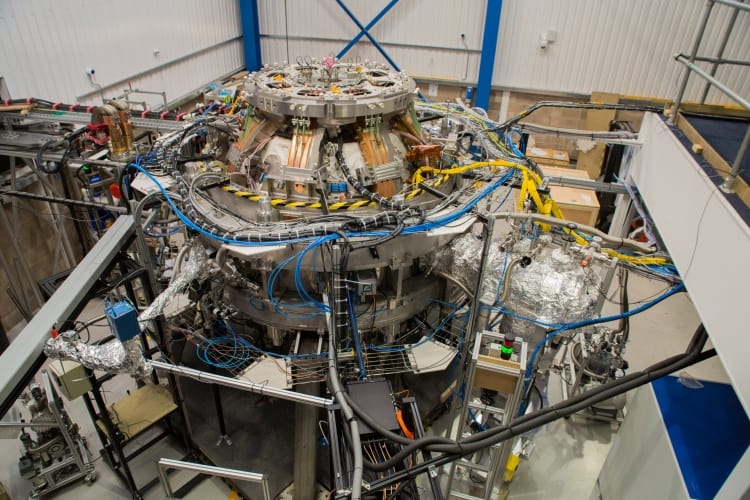Tokamak Energy hits 15 million degree fusion milestone
Privately funded UK venture Tokamak Energy has hit plasma temperatures hotter than the sun’s core for the first time, reaching 15 million degrees Celsius.


The milestone was achieved using the ST40 device, the latest in a line of tokamaks the company has built in pursuit of commercial fusion. Using a technique known as merging compression, the ST40 releases energy as rings of plasma that crash together and magnetic fields in the plasma reconfigure – a process known as magnetic reconnection. Merging compression involves high electric currents running through the internal coils of the ST40, requiring power supplies to deliver thousands of amps in seconds. According to Tokamak Energy, it combines intricate electrical engineering processes that also place high demands on the mechanical engineering of the whole system.
“We are taking significant steps towards achieving fusion energy, doing so with the agility of a private venture, driven by the goal of achieving something that will have huge benefits worldwide,” said CEO Jonathan Carling.
“Reaching 15 million degrees is yet another indicator of the progress at Tokamak Energy and a further validation of our approach. Our aim is to make fusion energy a commercial reality by 2030. We view the journey as a series of engineering challenges, raising additional investment on reaching each new milestone.”
Register now to continue reading
Thanks for visiting The Engineer. You’ve now reached your monthly limit of news stories. Register for free to unlock unlimited access to all of our news coverage, as well as premium content including opinion, in-depth features and special reports.
Benefits of registering
-
In-depth insights and coverage of key emerging trends
-
Unrestricted access to special reports throughout the year
-
Daily technology news delivered straight to your inbox










Water Sector Talent Exodus Could Cripple The Sector
Maybe if things are essential for the running of a country and we want to pay a fair price we should be running these utilities on a not for profit...